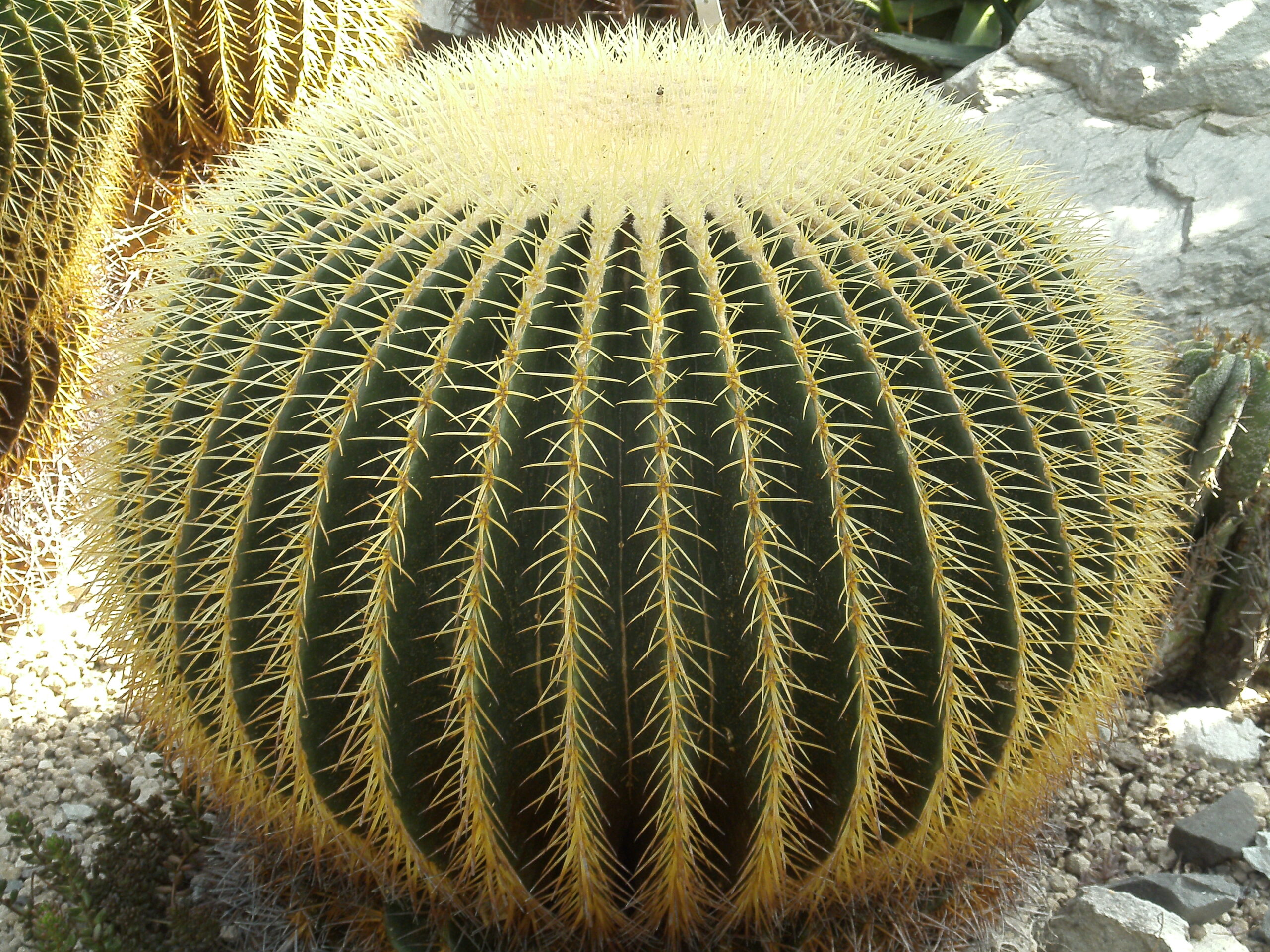The Echinocactus, commonly known as the barrel cactus, belongs to a fascinating group of succulents known for their distinctive rounded shapes and vibrant aesthetic appeal. The genus Echinocactus comprises several species, the most notable being Echinocactus grusonii, often referred to as the Golden Barrel Cactus. In this discourse, we will explore the salient characteristics, cultivation, and significance of the Echinocactus, providing an in-depth exploration of its appeal and unique traits.
The grandeur of the Echinocactus is exemplified in its striking geometrical form, often referred to as a barrel. These magnificent specimens can grow to impressive sizes, reaching diameters of up to three feet or more in their natural habitat. Their ribbed, cylindrical bodies typically showcase a rich green color, although they can possess various hues depending on their specific environment and care conditions. A key characteristic that captivates enthusiasts and collectors alike is the sumptuous golden spines that protrude from their surface, offering a stark, yet complimentary contrast that enhances their visual allure.
One cannot overlook the ecological niche that Echinocactus occupies. Native to the arid regions of Central and Northern Mexico, these cacti have adapted remarkably to withstand harsh climates, often thriving in alkaline and rocky soils where water is scarce. Notably, the ability of Echinocactus to store water in its fleshy tissues epitomizes the remarkable survivability of cacti. This biological adaptation allows them to endure prolonged periods of drought, thereby functioning as emblematic specimens of resilience and endurance in the plant kingdom.
Growing Echinocactus: Cultivation Techniques Unveiled
For enthusiasts looking to cultivate Echinocactus, understanding its specific requirements is imperative to ensure healthy growth and development. The ideal cultivation begins with selecting the appropriate growing medium. A well-draining cactus mix, ideally composed of sand, perlite, and pumice, allows for optimal aeration and prevents root rot. It is critical to avoid dense, moisture-retaining soils that can jeopardize the plant’s health.
Temperature plays a significant role in the optimal growth of Echinocactus. These hardy plants flourish in warm climates, typically ranging between 70°F to 100°F during the day. However, they can withstand occasional drops in temperature, demonstrating their tolerance to cooler conditions in winter, sometimes down to 30°F, provided they are shielded from excessive moisture and frost.
Light requirements are paramount for successful Echinocactus cultivation. These plants thrive in full sun exposure, necessitating at least six hours of direct sunlight daily. Insufficient light can lead to etiolation, where the plant stretches unnaturally searching for sunlight, thus compromising its distinctive shape and overall health. It is advisable to gradually acclimate young Echinocactus specimens to full sun to avoid sunburn.
Watering practices are critical, especially considering the native environment of Echinocactus. During the growing season—typically from spring through fall—these cacti should be watered thoroughly, allowing the soil to dry entirely between waterings. Over-watering is detrimental and can lead to root rot; therefore, a conscientious approach to hydration is essential. In winter, watering should be significantly reduced as the plant enters dormancy, retaining only a minimal amount of moisture to sustain its essential functions.
Observing the growth habits and flowering tendencies of Echinocactus is quite enchanting. After several years of cultivation, you may be rewarded with stunning flowers, a vibrant symphony of yellows and oranges that bloom atop the plant during the warmer months. These ephemeral blooms are typically short-lived, lasting only a few days, yet they create a moment of exquisite beauty that represents nature’s fleeting splendor.
The Aesthetic Appeal of Echinocactus
One of the most compelling reasons to cultivate Echinocactus lies not only in its resilience but also in its aesthetic charm. The spherical shapes, adorned with ornate spines that shimmer in sunlight, create an enchanting presence that can invigorate any garden or interior space. They serve as a focal point, drawing the eye and prompting discussions about their unique characteristics and care requirements.
Designing with Echinocactus can elevate the overall ambiance of a setting. Their adaptability allows them to be integrated into various thematic gardens, ranging from contemporary landscapes to traditional xeriscapes. When grouped with other succulents and drought-tolerant plants, Echinocactus creates an alluring tapestry of colors and textures that reflects the beauty of arid environments. The contrasting textures of smooth succulents and the rugged, spiky exterior of the Echinocactus provide a visually stimulating experience for observers.
Moreover, the focus on sustainability and conservation within gardening has magnified the appeal of Echinocactus. As collectors and enthusiasts aim to embrace eco-friendly practices, the Echinocactus stands as a model of a plant that thrives in arid conditions, requiring minimal resources while contributing to biodiversity. Planting these cacti not only beautifies spaces but also channels conscious living, advocating for conscious resource management in gardening practices.
A Cultural and Symbolic Significance
The cultural resonance of the Echinocactus transcends its physical attributes. In Mexican folklore, the barrel cactus is seen as a symbol of resilience and endurance as it flourishes in inhospitable terrains. Many indigenous cultures have utilized parts of the cactus for sustenance, showcasing its versatility and significance in traditional practices. Furthermore, the enduring nature of Echinocactus serves as a metaphor for strength during life’s adversities, enriching its appeal among gardeners seeking both beauty and meaning.
As conservation efforts intensify, the cultivation of Echinocactus extends beyond merely enjoying their aesthetic properties. It becomes a crucial aspect of preserving native ecosystems, emphasizing the importance of maintaining biodiversity within arid environments. By flowering these remarkable cacti, enthusiasts contribute to the preservation of their natural habitats and promote awareness of conservation initiatives.
In conclusion, the Echinocactus, particularly the Golden Barrel Cactus, represents a remarkable intersection of beauty, resilience, and ecological importance. Its cultivation embodies a commitment to understanding and respecting nature while providing a visually stunning addition to our gardens and homes. As we engage with this unique genus, we are reminded of the enduring charm of cacti and their vital role in sustaining the delicate balance of our ecosystems. Through thoughtful care and appreciation, the Echinocactus will continue to intrigue and inspire generations of plant enthusiasts and admirers.

Leave a Comment